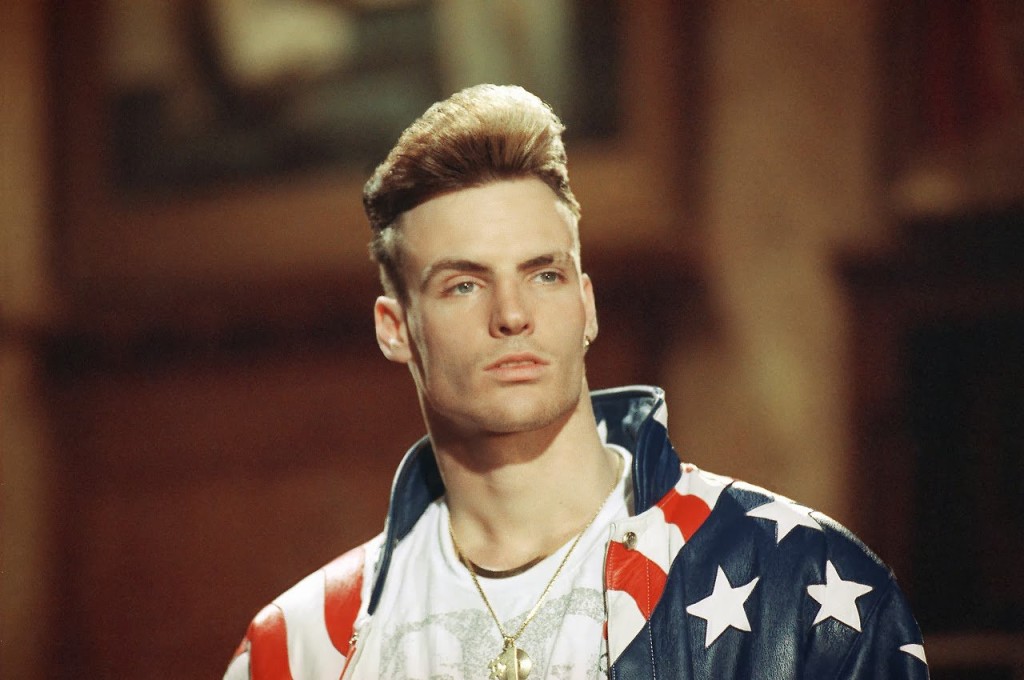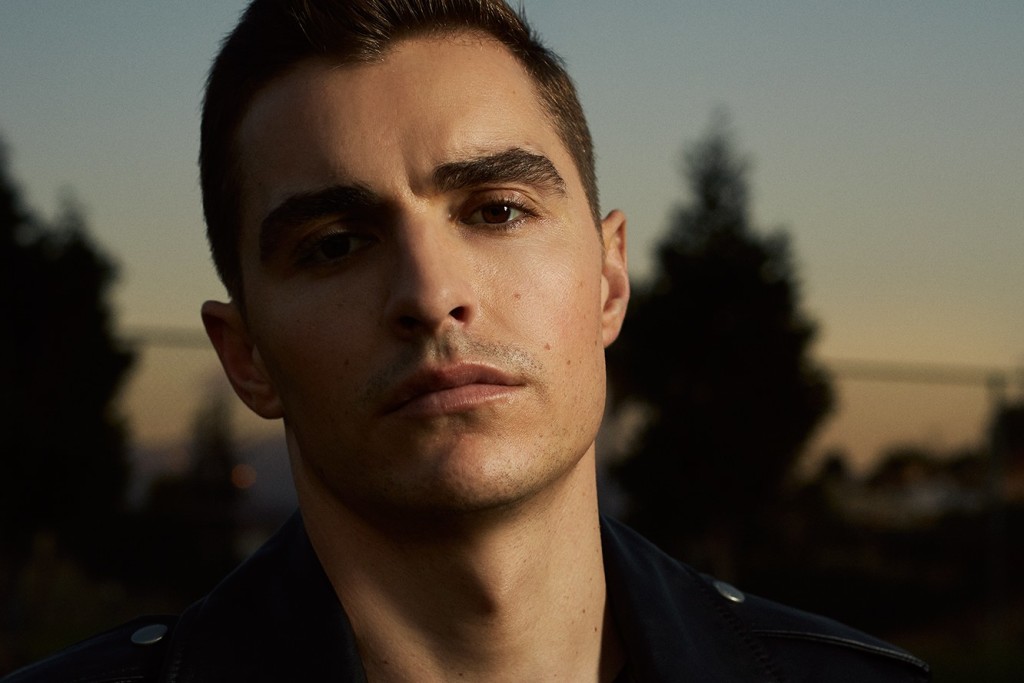Genre: Biopic
Premise: The rise and fall of the greatest one-hit wonder ever – Vanilla Ice.
About: “Something grabs a hold of me tightly. Flow like a harpoon daily and nightly.” Best lyric in the history of music? If this movie happens, one thing they won’t need is a make-up department. That’s because Vanilla Ice doppleganger Dave Franco is rumored to be playing the lead.
Writers: Chris Goodwin and Phillip Van
Details: 127 pages
You know the deal by now. When I read a biopic, I’m looking at whether I’m reading an author who did a quick wikipedia search and copy-pasted the story into Final Draft, or if I’m reading something where the writer actually thought about telling the story in a creative and moving way. If you do the latter, as very few people do, I’m thrilled. If you do the former, it’s one more bullet to the chest of the biopic. Which I’m okay with also because it means we’re one death closer to this genre never being relevant again.
For those new to biopics, here’s how we got here. Event movies destroyed the movie star. The movie star needed to find other options. The biopic became the go-to genre because it allowed the movie star to do what they do best, be the center of attention. The movie was about the historical figure, of course. But it was just as much about the actor. Even better, these movies became a primary vehicle for big studios to win Academy awards. So they were willing to spend big money on the production, the actor, and the director. Do you get to save the world anymore? No. But you get your close-up. And that’s all movie stars care about.
Anyway, I like the idea of a Vanilla Ice biopic because it opens up some avenues to not take the genre too seriously. Maybe play with the format a bit. Have some fun. Let’s see what route the writers took.
Robbie Van Winkle grew up in Miami Lakes, Florida. He was a little kid with a unique dream as a white boy – to be a rapper. Robbie worked as a used car salesman at 20 years old, and he and his crew would go over to the City Lights Night Club every weekend and watch the rap acts. One night, his friends tricked the booker into getting him up on stage, And Robbie killed it. Tommy Quon, the owner of the club, liked what he saw. To him, Robbie was a young Elvis, just doing it in a different style of music.
Tommy ended up selling his club and going out with Robbie on the road where they played in a bunch of dingy redneck bars that didn’t understand what Robbie was doing. But after a year of touring and Robbie piece-mailing together 10 songs, one of those songs, Ice Ice Baby, which was actually a B-track that Ice and his crew felt was weak, started playing on the radio. This led Tommy and Robbie to LA, where they signed with the record label, SBK, who gave Robbie, now “Vanilla Ice,” a half-million dollar advance.
Ice’s single would shoot to the top of the charts where he’d rub elbows with MC Hammer, an artist who many people felt Ice was copying. The single would then lead to an infamous cameo in Teenage Mutant Ninja Turtles 2, and then Ice’s own movie, Cool as Ice (“Drop the zero and get with the hero”). Quickly, however, the media turned on him, saying that he had stolen the hook from David Bowie’s song, “Under Pressure.” In a famous interview, Ice would explain the difference. “We sampled it from them but it’s not the same baseline. It goes DING DING DING DIGA DING DING. DING DING DING DIGA DING DING. That’s the way theirs goes. Ours goes DING DING DING TING AHH DING DING. DING DING DING TING AHH DING DING.”
But things would get a lot worse. Suge Knight, then an up and coming music producer, threatened Ice’s life if he didn’t give him a percentage of the profits from Ice Ice Baby. Ice was so shaken by the encounter that he hired eight body guards with machine guns to guard his house at all times. Ice then turned to drugs to ease the anxiety, and before he knew it, he was out of money with no prospects. Eventually he would come to the realization that it was time to leave Ice behind and reintroduce himself to Robbie.
The most amazing thing about this script is that the rise and fall of Vanilla Ice is structured so evenly. It’s literally the first half is all about the rise and the second half is all about the fall.
To me, the fall was more interesting. I didn’t know anything about the Suge Knight stuff. What do you do when a thug accompanied by four armed men holds you over a ledge and threatens to drop you unless you give him ten percent of the proceeds to your multi-million dollar hit? I guess you say ‘yes.’
As long as we’re talking about hit records, though, we might as well talk about broken ones. I say this every time I review a biopic. Unless you have the most fascinating person with the most fascinating life ever, to the point where you don’t have to change a thing – that’s how amazing it is. If you don’t have that, you need to make some story decisions that set your biopic apart from all the other ones.
This is your typical rise and fall music biopic. There’s nothing inventive about it at all. There’s even a “descends into the drugs and party life” montage. And while Vanilla Ice is amusing, he’s by no means fascinating. So it’s one of those typical reads where you get to the end and you think, “That wasn’t bad.” But it certainly wasn’t great.
A stronger theme probably could’ve helped. With these biopics, since they’re so furiously focused on one individual, you want to say something about the world through that individual. There were tiny moments that hinted at this theme of Vanilla Ice being the first example of cultural appropriation – a white man trying to act black. But they never went that far with it. I think they also could’ve pushed Ice’s desire to be accepted by the black community more. Let’s face it. In this day and age, the media loves race-bait. They eat it up. So if your movie plays into that, people are going to talk about it. And I truly felt like Ice was hurt that people in the hip-hop community weren’t more accepting of him.
And if you’re wondering how do you manage a theme like that in a screenplay – you start with your climax. Your climax should be the moment where your theme is colliding with your character in the most dramatic way. So, as an example (although there are many ways to do it), you might have Vanilla Ice break down about the fact that this community he so badly wants to be a part of has officially rejected him. And then you move backwards from there and make sure there are ample moments throughout the script that keep that topic at the forefront. If your theme is a huge part of your climax, it’s likely the audience will know that THAT’S what your film is about. If it isn’t, we’re probably going to be confused as to what the movie was about. And that was the case with To The Extreme. I’m not sure what it was about other than a singer’s rise and fall.
With that said, I was never bored by To the Extreme. But like all biopics, it’s sort of like reading a wikipedia page while on a Disneyland ride. It’s slightly more exciting than reading it from your couch. And I suppose if you knew nothing about Vanilla Ice, this might wax your candle. But if you don’t know who Vanilla Ice is, do you wanna know? I don’t know. Word to your mother. Peace in the Middle East.
[ ] What the hell did I just read?
[ ] wasn’t for me
[x] worth the read
[ ] impressive
[ ] genius
What I learned: Always try to find fun ways into scenes. If you have a meeting between characters, ask yourself if there’s a way into that meeting other than one man walking into a room, sitting down, and talking with another man. In To The Extreme, Tommy (the night club manager) says to Robbie to come meet him tomorrow at 10. This is Robbie’s big shot. Someone likes his music! Now we could’ve had Robbie just show up. But the writers cleverly have Robbie working at the car lot that day. And his boss, Bryon, won’t give him the time off. So Robbie has one of his friends, Chill, show up pretending to be looking for a car. This allows Robbie to give him a “test-drive,” which, in actuality, allows the two of them to get to the meeting.



